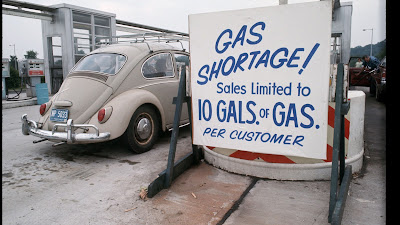1929 and 1973 Global Economic Crises
SEVDA ÖZBAY
In this article, I tried to explain and discuss the main causes and the social, economic, political, ideological, and cultural consequences of the 1929 and 1973 global economic crises that hit the world.
1929 Global Economic Crisis
Global
Economic Crisis of 1929 began as financial crisis in the United States but soon
spread to Europe and developed into worldwide macroeconomic crisis that
involved sharp falls in demand, output, and trade.
The USA was
profitable from the First World War. Well-being increased. When the process
begins to normalize after the war, there was not enough demand for production.
Surplus production is a cause of crises in capitalism. Also, failure to repay
loans was a great problem.
The main
economic consequence of the crisis is transition to Keynesian economic
policies. It is seen that "the invisible hand" of classical economics
did not work, so they turned to Keynesian policies. This meant that the state
was expected to more intervene in the economy. During the crisis period, 50
million people were unemployed in the world, total production in the world
decreased by 42% and world trade decreased by 65%.
The most
important political consequence of the 1929
global economic crisis was of course the rise of right-wing
authoritarianism in Germany, Austria, Central and Eastern Europe, and Latin
America. But in countries that remained democratic, the Great Depression is
instead associated with political realignments that favored the left, such as
the “red-green” coalitions behind ascending political leaders such as Franklin
D. Roosevelt
In this
process, thousands of people's assets disappeared, thousands of people faced
hunger. People have started to make a living by growing vegetables and fruits. People
used the barter method. In this period, however, many soup kitchen were opened
in the USA and served people. Social effects of the
1929 global economic crisis can be
listed as follows: mass migrations, rise in the crime and suicide rates,
increasing of alcoholism, lack of access of higher education, decreased divorce
rates, rise in awareness about birth control…
In this
period, Turkey, to increase the use of domestic goods has been declared a
domestic goods week.
1973 Global Economic Crisis
This crisis is
also known as The Oil Crisis. Member countries of Organization of Arab
Petroleum Exporting Countries decided to apply an embargo against countries
which support Israel during Arab-Israel Wars (exactly Yom Kippur War). This is
the main reason of the crisis.
It will be
useful to start with a background information about Middle Eastern oil in terms
of understanding the subject. Oil in the region was discovered before the first
world war. After the war, Britain and France tried to dominate the region with
the mandate system while US tried to be effective with the oil companies. During
the cold war, western states lost their former domination and used oil
companies to regain it. Oil companies were nationalized in reaction in some
countries where companies were located. Meanwhile, with the developing
technology, oil had become an important energy source, especially in industry.
After western
countries exported oil at low prices, OPEC was established in September 1960. The
aim of OPEC is to ensure cooperation between oil producing countries and not to
damage the producer countries on price, to increase and control the oil prices.
After the Arab-Israeli wars, OAPEC was founded by oil-exporting Arab countries
to use oil as a political power. Although the organization was established
after the Six Days War (1968), it was not effective until 1973.
After the Yom
Kippur war in 1973 members of OAPEC began to apply an embargo against western countries
(there was Japan, too). At the end of
the embargo oil prices quadrupled; Britain changes its arms embargo; Japan
reacted to Israel; The USA did not change its policy. In response to the
embargo, the USA announced that they can do a military intervention in the
Basra Bay.
Arab oil
producers linked the end of the boycott to peace between the parties. To
address this, the Nixon Administration began multilateral negotiations between
the parties (Kissenger, Shuttle Diplomacy). They ensured Israel's retreat from
the Sinai Peninsula and the Golan Heights. The embargo ended in March 1974.
As a result of
the embargo, industrialized countries were obliged to accept that OPEC members
to raise crude oil prices in every six months. On the other hand Western states
established the International Energy Agency with the aim of cooperation in the
field of oil and energy.
In response to
the hikes in crude oil, industrialized countries have made a way to meet their
financial losses by increasing the products they produce. Besides, the fact
that oil producing countries assessment their money in American and European
banks was another factor that reduced the losses of industrialized countries. The countries most affected by the crisis was developing
countries such as Turkey.
The most important
result of the crisis, in the field of technology is greater interest towards
alternative energy sources. Work has begun to generate electricity mostly from
dams, nuclear or thermal power plants, wind, and sunlight.
Bibliography
AKŞİN, Sina. Kısa 20. Yüzyıl Tarihi.
İstanbul: Türkiye İş Bankası Kültür Yayınları, 2018.
EFE, Süleyman. Çağdaş
Türk ve Dünya Tarihi. Ankara: Limit Yayınları, 2018.
Lindvall, J. «The Political
Consequences of the Great Depression and the Great Recession: Remarkably
Similar.» Swiss Political Science Review, 2018: 514-517.
wikipedia. 6 6 2020.
https://en.wikipedia.org/wiki/1973_oil_crisis (erişildi: 8 7, 2020).






Yorumlar
Yorum Gönder
Ee okudun o kadar, sen ne diyosun :)